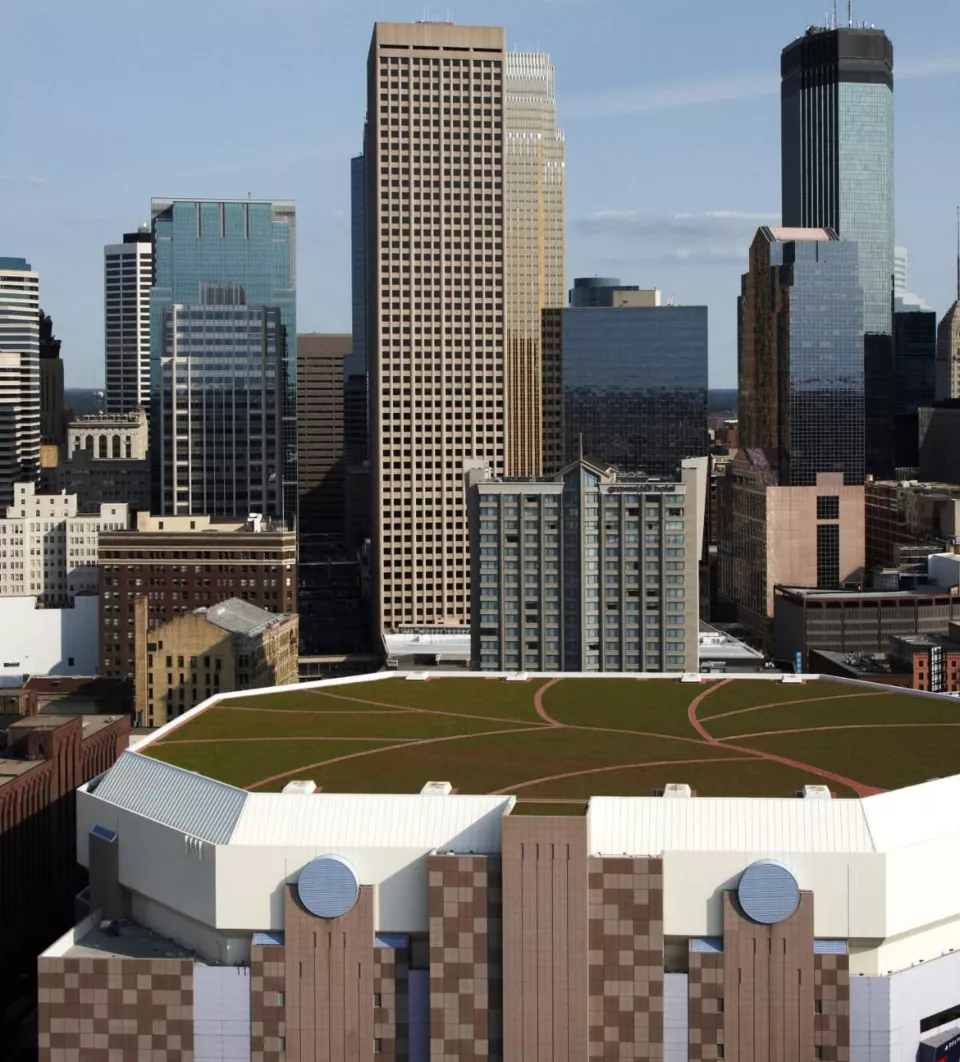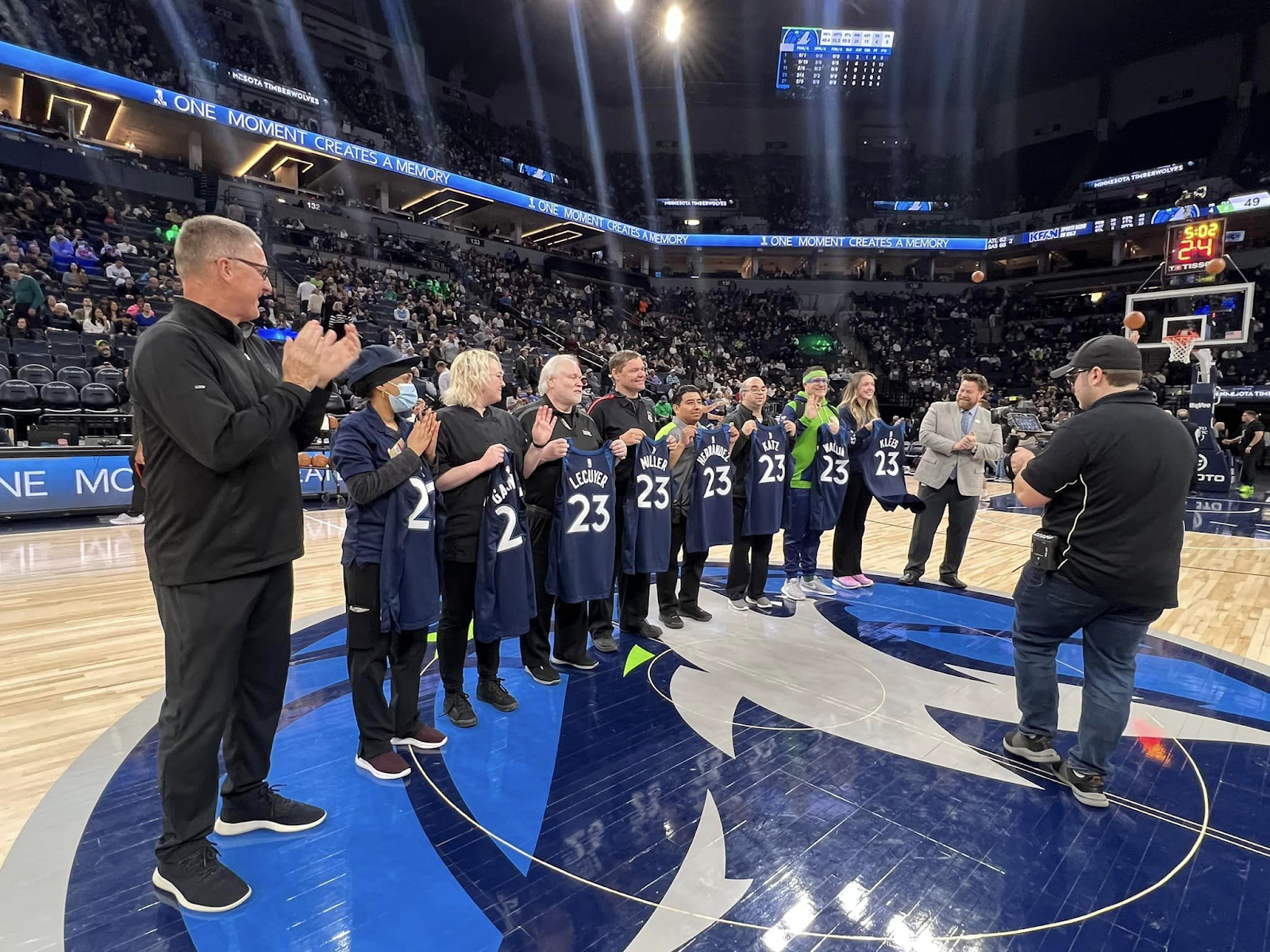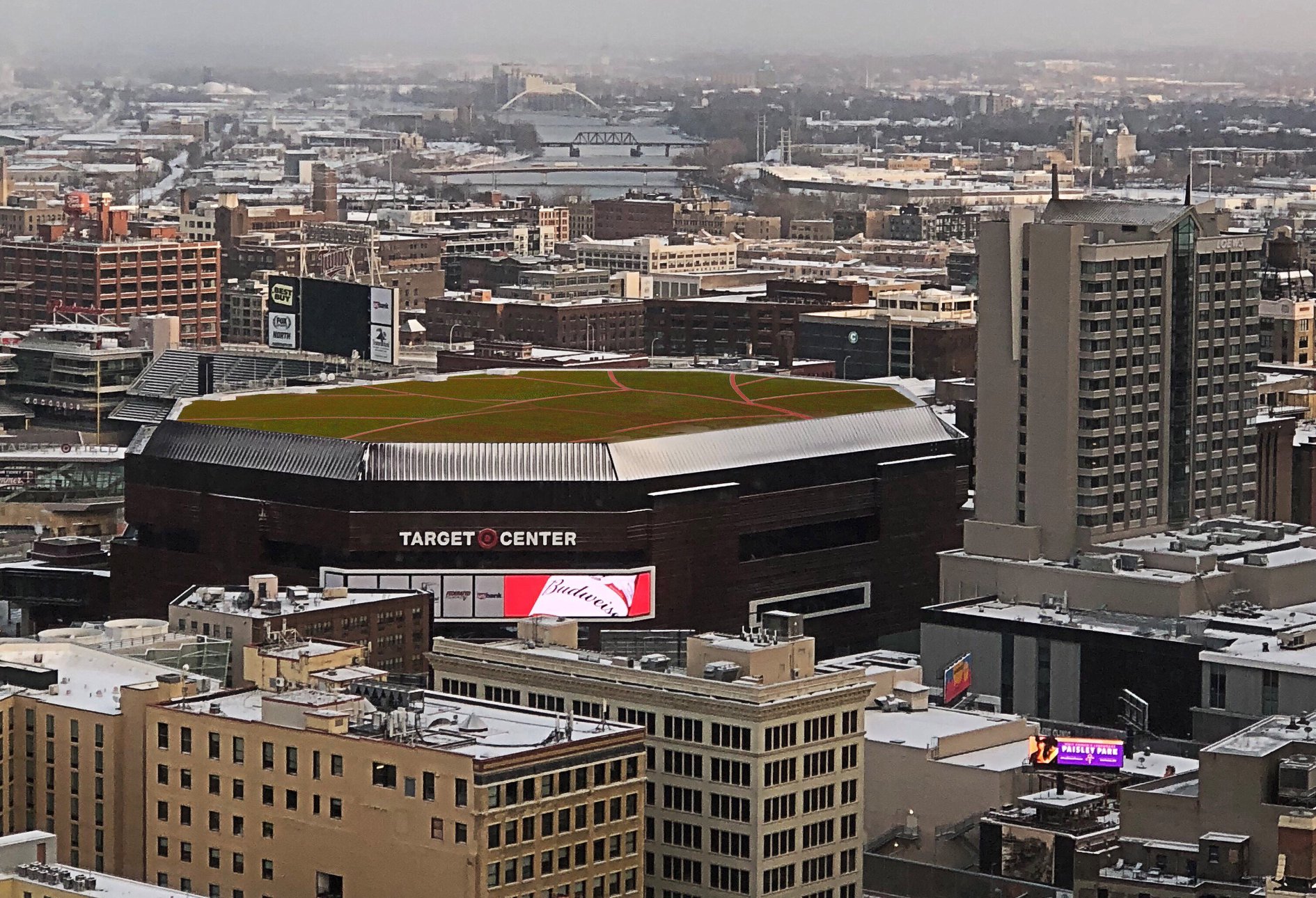It’s easy to see why the Green Sports Blog has hailed the twin cities of Minneapolis and St. Paul as the “Green-Sportsy-est” metro area in America. It is home to environmentally heralded sports venues such as the U.S. Bank Stadium, Target Field, University of Minnesota’s Huntington Bank Stadium, and the Target Center.
The crowning glory, sustainability-wise, of the Target Center is its roof. In 2009, the building — the home court to both the Timberwolves (T-wolves) of the NBA and the WNBA’s Lynx — became the first arena in North America to sport a green roof. Additionally, at 113,000 square feet, it also stands as one of the largest extensive green roofs in the nation.
The vegetated surface, which is anticipated to last twice as long as a regular roof, provides numerous positive environmental virtues. One advantage is a reduction in the urban heat island effects, resulting in decreasing air pollution, lowering electricity usage, and improving air quality. Another major benefit is that it captures approximately 1 million gallons of stormwater per year, preventing the runoff from straining the city’s sewer system and reaching the Mississippi.

Photo Courtesy Sika USA
Filling the green roof is a varied selection of native flora, sedums, and prairie plants, including columbine, wild strawberry, lanceleaf coreopsis, and dotted blazing star. Planting a range of species helps to improve the resiliency of this mini-ecosystem, along with lessening the presence of volatile organic compounds, nitrous oxides, and airborne particulates. The green roof also creates a welcoming habitat for local wildlife, such as butterflies and grasshoppers.
To achieve this fertile environment necessitated the inclusion of some hi-tech gardening techniques. A cutting-edge waterproofing membrane was employed to protect the flora from continual dampness, plant root exposure, and possible contact with fungi and other bacterial organisms.
Because of the roof’s large acreage, there was a limit to the garden’s weight. A special soil, Rooflite Extensive MCL, was developed to help plants grow in less than typical soil depth.
The rooftop also contains more than 11 miles of sustainable, water-efficient irrigation lines, and a state-of-the-art Electric Field Vector Mapping leak detection system was utilized to safeguard against damaging water leaks.
Just as impressive as the green roof itself is that around 97% of the original synthetic rubber roof was recycled, which amounted to nearly 1,200 tons of pavers and rocks and 60 truckloads of roof insulation. Moreover, the Target Center’s spectacular green roof attracted much attention and accolades, including the Special Recognition Award from the Green Roofs for Health Cities organization.
The Target Center didn’t just keep its sustainability efforts confined to its roof. During its extensive, multimillion-dollar renovation that happened in the late 2010s, the arena greatly increased the amount of glass in the building’s exterior, which had previously been solid concrete walls.
These additions, including a three-story glass atrium for its new main entrance, brought more light into the Target Center and, consequently, lowered the need for electrical lighting. Furthermore, the arena generated energy savings by switching to thousands of LED light fixtures, along with updating various plumbing and mechanical systems in the building.

Photo Courtesy Target Center
The T-wolves were also able to change the airplane type, which was about 30% more energy efficient than their previous model. Meanwhile, the team was one of the first NBA franchises to go with digital tickets versus the traditional paper kind.
The Target Center has demonstrated an interest in sustainability on the food front, too. In 2016, acclaimed St. Paul, MN, restaurateur David Fhima was brought aboard as a “nutritional curator.”
He placed an emphasis on stocking the arena with food that is locally sourced, organic, and sustainable.
“In my view, Target Center is already a world leader in providing clean, healthy food that maintains its savory component, …” Fhima told GreenBiz.com in 2019. “We are ahead of the game, providing an improved all-around culinary experience.”





